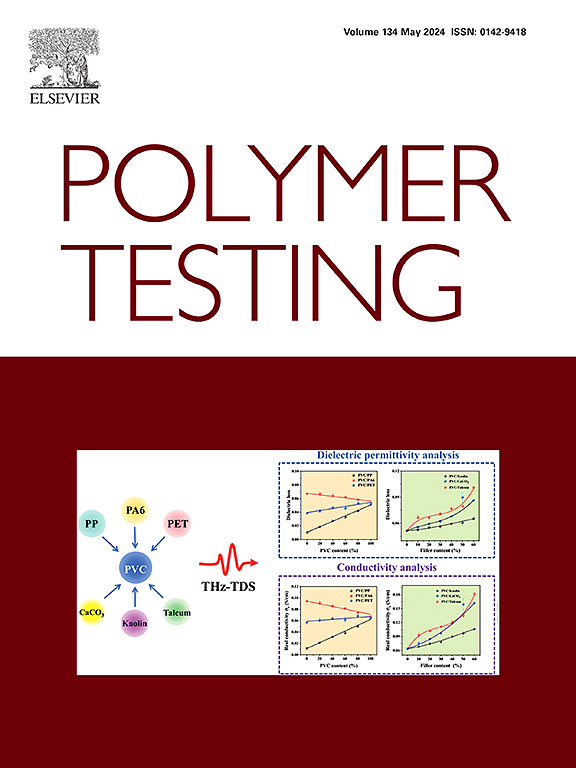In situ wear test of acrylonitrile butadiene rubber in a low pressure hydrogen environment
IF 5
2区 材料科学
Q1 MATERIALS SCIENCE, CHARACTERIZATION & TESTING
引用次数: 0
Abstract
Polymers are increasingly being used in hydrogen environments because of their potential for high durability and cost-effectiveness in applications such as fuel cells and hydrogen storage systems. However, the interactions between polymers and hydrogen, particularly under varying pressure conditions, can significantly affect their performance, leading to challenges in material selection and design. Hence, this study investigated the tribological behavior of acrylonitrile butadiene rubber (NBR) in low-pressure hydrogen environments and focused on the effects of different filler types and contents, including carbon black and silica. Using a custom-designed in situ tribometer, wear tests were conducted to evaluate the friction and wear characteristics of the NBR composites in hydrogen, helium, and ambient air atmospheres. The findings indicated that the filler type and content critically influenced the tribological performance of NBR, with carbon black-filled NBR showing higher friction coefficients and wear rates and silica-filled NBR exhibiting superior wear resistance and lower friction. These results emphasize the importance of optimizing the filler selection to enhance the durability and effectiveness of NBR in hydrogen-rich environments. Therefore, the results of this study provide valuable insights for the development of robust sealing materials for hydrogen energy applications.
求助全文
约1分钟内获得全文
求助全文
来源期刊

Polymer Testing
工程技术-材料科学:表征与测试
CiteScore
10.70
自引率
5.90%
发文量
328
审稿时长
44 days
期刊介绍:
Polymer Testing focuses on the testing, analysis and characterization of polymer materials, including both synthetic and natural or biobased polymers. Novel testing methods and the testing of novel polymeric materials in bulk, solution and dispersion is covered. In addition, we welcome the submission of the testing of polymeric materials for a wide range of applications and industrial products as well as nanoscale characterization.
The scope includes but is not limited to the following main topics:
Novel testing methods and Chemical analysis
• mechanical, thermal, electrical, chemical, imaging, spectroscopy, scattering and rheology
Physical properties and behaviour of novel polymer systems
• nanoscale properties, morphology, transport properties
Degradation and recycling of polymeric materials when combined with novel testing or characterization methods
• degradation, biodegradation, ageing and fire retardancy
Modelling and Simulation work will be only considered when it is linked to new or previously published experimental results.
 求助内容:
求助内容: 应助结果提醒方式:
应助结果提醒方式:


